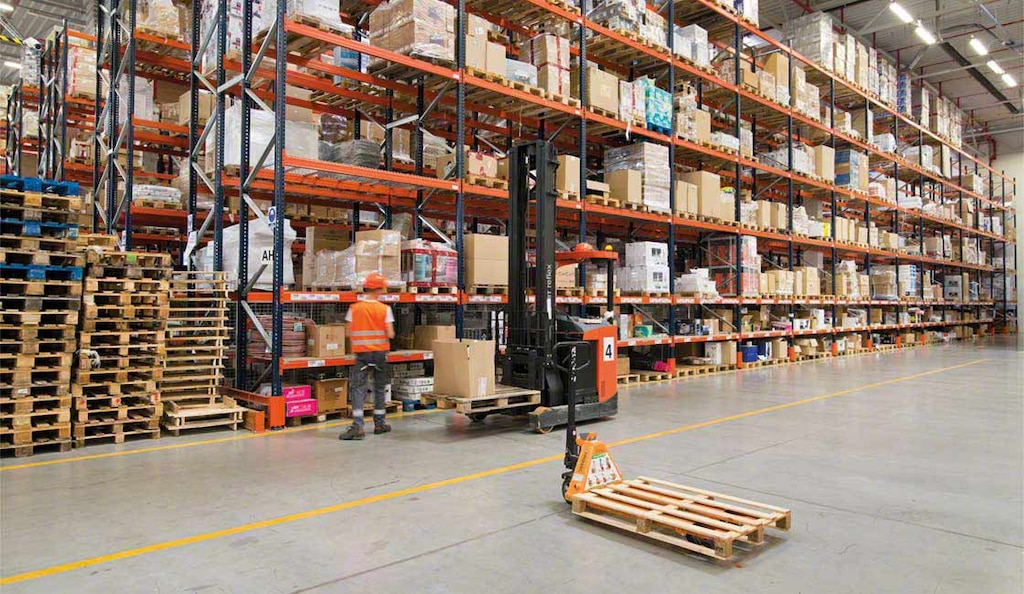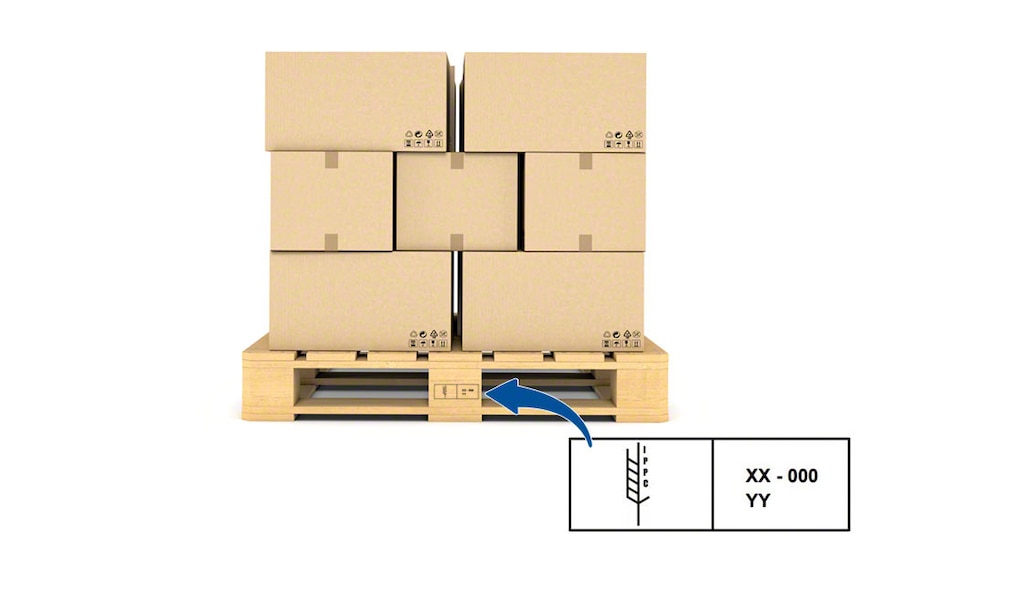
Heat treated pallet: Types of treatment and ISPM 15 compliance
Heat treated pallets have become a crucial logistics component in many areas of freight transportation. Companies rely on them to strengthen internal protocols, reduce handling and shipping risks, and stay prepared for audits and inspections by regulatory agencies. Beyond boosting trust among clients and suppliers, their use facilitates compliance with international standards and speeds up customs clearance. They also help raise quality benchmarks, cut costs linked to product rejections, and simplify global inventory management.
In this post, we look at the significance of heat treated pallets, the benefits they bring, and the requirements for acceptance in different markets.
What is a heat treated pallet, and why is it important?
A heat treated pallet (HT pallet) is a wooden pallet that has undergone a phytosanitary process to eliminate harmful organisms such as insects, fungi, and bacteria. The goal is to prevent the spread of pests and invasive species while protecting the ecosystems of the countries receiving the goods.
Any wooden pallet used for export — whether new, recycled, or repaired — must be treated when required by the destination country. This process isn’t designed to improve pallet durability or strength, but to control pests. That said, lowering the wood’s moisture content also helps prevent rot and mold growth. These pallets carry an ISPM 15-compliant stamp (often called the “wheat stamp” or “bug stamp”). This HT pallet stamp is typically branded into the wood on at least two opposite sides for easy identification during inspections.
Pests can travel across continents hidden inside the wood, both as adults and larvae. Introducing non-native species into a new ecosystem can upset the environmental balance and threaten local flora and fauna. By meeting international standards and proving that the wood is pest-free, heat treated pallets greatly reduce the risk of shipments being rejected or placed in quarantine at customs. This helps exporters avoid delays, extra costs, and potential penalties.

What does heat treated pallet mean?
A heat treated (HT) pallet is a pallet that has gone through a phytosanitary process designed to eliminate insects and other harmful organisms before being used for exports. This process is carried out to meet protection standards governed by international regulations. In this method, pallets are heated in large industrial kilns until the core of the wood reaches a minimum temperature of 133 °F for at least 30 minutes.
However, heat treatment is not the only option. Pallets can also undergo other phytosanitary treatments regulated by international guidelines:
- Dielectric heating (DH): uses electromagnetic waves (microwaves or radiofrequency) to generate heat within the wood.
- Methyl bromide (MB) fumigation: exposes the pallet to a toxic gas for several hours at a controlled temperature, though this method has been largely restricted due to environmental concerns.
- Sulfuryl fluoride (SF): a less common chemical fumigant, applied under strict regulation as an alternative to methyl bromide.
Which pallets are exempt from phytosanitary treatment?
Pallets exempt from ISPM 15 regulations are those that, due to their material or manufacturing process, do not require treatment to prevent the spread of pests in international trade:
- Plastic. Accepted worldwide without phytosanitary restrictions, plastic pallets offer advantages such as greater resistance to moisture and heat during sea or air transportation. They’re also durable, reusable, and have a very low breakage rate.
- Plywood. Made from multiple layers of wood bonded together, these pallets are reusable and efficient in terms of waste and cost. Their controlled, uniform composition reduces the chance of harboring harmful organisms.
- Chipboard. Manufactured by pressing wood particles at high temperatures, these are considered processed wood rather than solid timber. For this reason, they meet ISPM 15 requirements without additional treatments.
- Cardboard. These are exempt from ISPM 15 because they contain no natural wood and pose no pest risk. Lightweight, recyclable, and eco-friendly, cardboard pallets are ideal for short-term shipments or light goods. Their low weight helps reduce transportation costs.
What is ISPM 15?
ISPM 15 (International Standard for Phytosanitary Measures No. 15) is a set of guidelines that regulates the treatment and marking of wooden packaging used in international trade to prevent the spread of pests. It was developed by the International Plant Protection Convention (IPPC), a treaty supervised by the Food and Agriculture Organization (FAO) of the United Nations. Its goal is to promote coordinated and effective action to prevent the introduction and spread of pests.
Under ISPM 15, treated pallets must be marked with the following information:
- IPPC certification symbol.
- ISO code of the exporting country.
- Code of the company authorized to carry out the phytosanitary treatment or manufacture the wood packaging in compliance with ISPM 15.
- Abbreviation of the type of treatment applied (HT, DH, MB, or SF).
This stamp must also meet certain formal requirements: it should be square or rectangular, with a vertical line separating the IPPC symbol from the other codes. It must also be permanent — metal, plastic, or adhesive labels are not allowed — legible, and preferably black. Red or orange should be avoided, as these colors are reserved for hazardous materials.

Benefits of heat treated pallets
Heat treatment ensures regulatory compliance while promoting material reuse and sustainability:
- Safety. It eliminates pests and harmful organisms in the pallets, extending their lifespan and helping goods arrive in optimal condition.
- Compliance. It enables pallets to meet import and export requirements in countries enforcing ISPM 15. This allows companies to trade globally while staying compliant with phytosanitary regulations.
- Sustainability. Heat treated pallets can be used across multiple storage and transportation cycles, reducing the need to produce new units and lowering the environmental impact associated with wood production and waste.
- Versatility. HT pallets are used across various industries (agriculture, food, and pharmaceuticals) where protecting goods and maintaining supply chain integrity are critical.
Heat treated pallets: Compliance for exports
Heat treated wood pallets have become key in preventing pests and diseases in international logistics. This treatment also encourages responsible reuse of materials, helping to lessen environmental impact. By following ISPM 15 standards, companies not only expand their export opportunities but also gain unrestricted access to numerous global markets. Compliance makes it easier to grow product reach, strengthens competitiveness in international logistics, and helps protect ecosystems.
Heat treated pallets in 5 questions
What is a heat treated pallet?
It’s a wooden pallet that has undergone a specific treatment to eliminate insects, fungi, or other harmful organisms. The purpose of HT pallets is to prevent the spread of pests through international trade.
What is a treated pallet?
Any wooden pallet (new, recycled, or repaired) that has undergone a phytosanitary treatment. In addition to the more widespread heat treatment (HT), three other types of treatments can be applied: dielectric heating (DH), methyl bromide (MB) fumigation, or sulfuryl fluoride (SF).
What are fumigated pallets?
These are pallets subjected to a fumigation treatment — chemical or thermal — where gas concentration and temperature are carefully controlled for a minimum period to ensure effective pest elimination.
What are ISPM 15 pallets?
An ISPM 15 pallet is a pallet that complies with the International Standard for Phytosanitary Measures No. 15 (ISPM 15). The standard, developed by the International Plant Protection Convention (IPPC), was created to coordinate effective measures to prevent the introduction and spread of pests.
